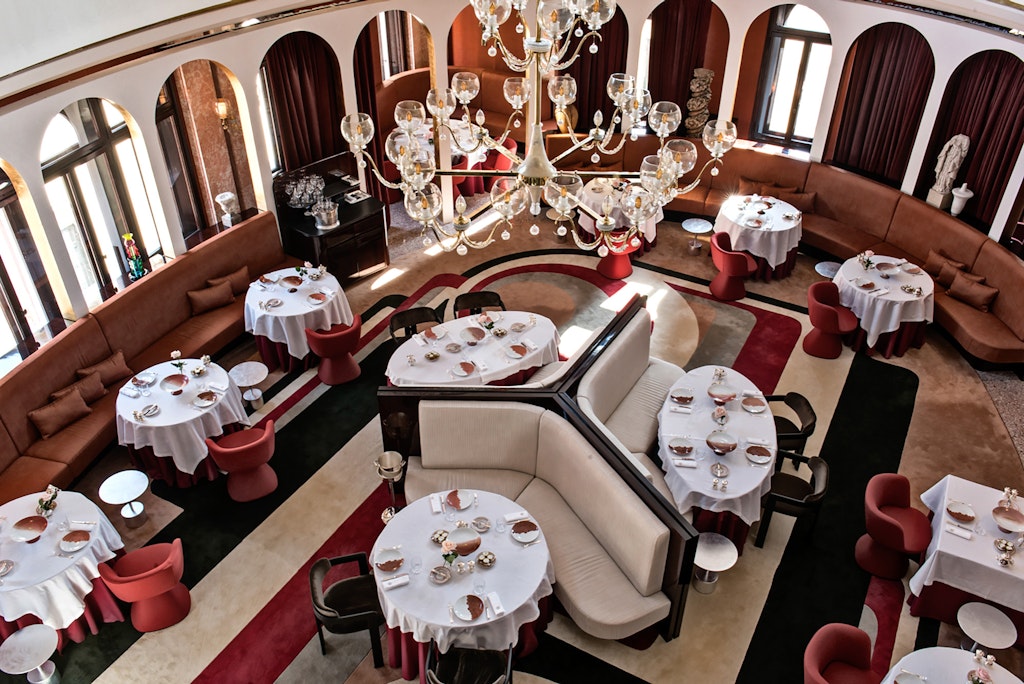This article is taken from the July 2024 issue of The Critic. To get the full magazine why not subscribe? Right now we’re offering five issues for just £10.
Spring is the gayest season for London restaurant openings. Arlington, July, The Cocochine, Lita, Oma — which to choose?
Sometimes though, amidst the merry whirl of town life, it can be refreshing to dine in a restaurant that isn’t hustling for your attention, a place that no one will ask you if you’ve been to yet, which is entirely free of list-checking, status-adjacent anxiety.
Royal China on Baker Street has been exactly such a restaurant since it opened in 2005. It’s not the latest, or the coolest, which makes it fantastically soothing; reliable for unfussy celebrations, quick catch-up lunches or impromptu late-night feasts. If you have recently become divorced or need a venue for a discreet row, the tables are satisfyingly far apart and no one will look at you if you have a short cry.
Many of the staff have been there for 20 years and while the service is always brisk, efficient and cheerful, it is far from effusive. Regulars can expect a nod, otherwise the 250-seater room is blissfully anonymous.
Whilst the space is undemanding, the refined Cantonese cuisine is not. Including their more aspirational flagship Royal China Club further along the street, Royal China Group now has seven sites under the supervision of executive head chef Man Yuk Cheung, and each restaurant also has a dedicated dim sum chef who prepares those heart-touching little parcels of joy to order from noon each day.

Royal China has no truck with the trend for aggressively abbreviated menus. The choice is vast, as are the unrepentantly garish objects themselves (see short cry, above). There’s always something thrilling about the arrival of the tiered bamboo steamers and their hidden surprises.
Personal favourites are the pork dumplings in slithery hot sauce, sweet golden honey pork puffs, the elegant, rather austere scallop, classic shu mai, sesame prawn and the magnificent Shanghai-style, pleated teardrops which burst on the spoon in a gush of fine broth.
Then there are noodles — so many noodles — fried, braised, boiled, shredded, dusty with curry or silkily chilled. Barbecue pork with greens is particularly satisfying but for an elevated take on the combination of chewy meat and slippery side, try getting to grips with the preserved pork knuckle with jellyfish, a brilliant demonstration of the paradox of texture so highly prized in Chinese cooking.
As everyone knows by now, texture is the great challenge to Western palates, but Royal China is a great place to appreciate “kou gan” (“mouth-feel”). If European food is all about packing flavour in, a key element of Chinese food can be deliberately removing it, the better to apprehend the contrasts of texture.
The point of the jellyfish is not the taste, but the curiously al dente sensation, simultaneously crunchy and frankly, slimy, which sets off the dense, rich meat.
The writer Fuchsia Dunlop explains the delight of textural chewing as “high grapple factor”: this is a way of eating that makes work for the tongue and teeth, teasing out and separating. It’s meditative and messy and not something you’d want to be doing if there was a chance of Jeremy King popping by your table to say hello, but definitely satisfying.
For those who prefer to dine on the milder side, the variations on more familiar dishes are equally good. Crispy duck with pancakes, of course, trusty beef with chilli and deep blackbean sauce or perked up with ginger and spring onion, whole lobster with hot and spicy salt, or the seemingly plain but inspired sauteed string beans with minced pork. Ingredients feel fresh, the spicing is properly present but not exaggerated— no Szechuan heroics here — and the tea keeps coming until pudding, which is as comfortingly old school as the menus.
Toffee apple or banana with what I sincerely hope is a scoop of Wall’s vanilla, a flabby mango shape and a nod to authenticity in red bean pastries which no one ever orders: unironically childish and embarrassingly yummy.
In all the time i’ve been coming to Royal China, I confess I’ve never bothered to look at the wine list; somehow a glass of admittedly not very nice house white always felt like the right thing, but I did try to check what was on offer. Since there’s no list on the website, presumably the management don’t feel it’s worth bothering to look at either. There’s a certain haughtiness about that which encapsulates why Royal China has remained so pleasingly itself.
Lack of pretension in restaurants has become a cliché, but here it feels genuinely disinterested, indifferent to fashion or the hectic competitiveness which can affect restaurants and customers alike. Perhaps that makes it sound rather soulless, but there’s a certain relief in a place which expects nothing of you, whether you’re ordering the hangover-friendly hot and sour soup or a blowout banquet.
It’s certainly not intimate, romantic or remotely glamorous; aside from the opulently gold-lacquered bar, the décor is best described as functional and the lights do not encourage lingering. Yet it charms by making no attempt to charm, allowing one to concentrate on the food. Sometimes it’s liberating to just be another customer.
Enjoying The Critic online? It's even better in print
Try five issues of Britain’s most civilised magazine for £10
Subscribe



